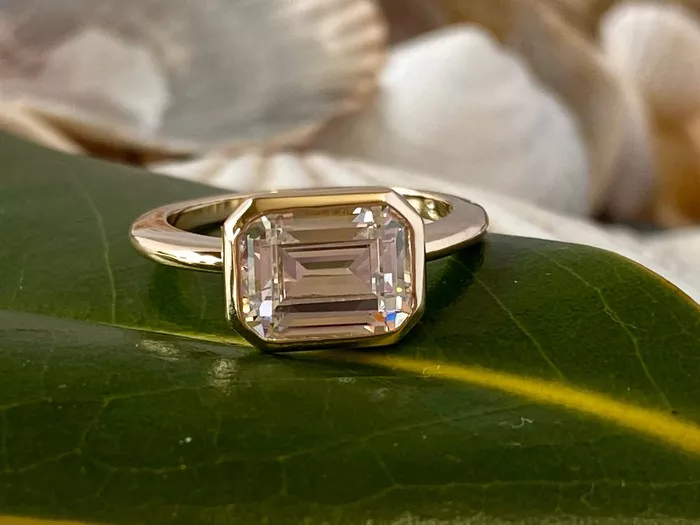From ancient talismans to modern symbols of love and prestige, diamonds have captivated humanity for centuries. Their journey from the depths of the earth to the crowns of royalty is a tale rich with cultural significance and technological advancements. In this exploration, we delve into the origins of diamonds in jewelry, tracing their path from ancient India to contemporary engagement traditions.
Ancient Origins in India:
Diamonds, with their mesmerizing brilliance and hardness, have been revered since antiquity. The earliest known use of diamonds traces back to ancient India, where they were valued not only for their rarity but also for their mystical properties. It was in this subcontinent that diamonds were first discovered, likely around 4th century BC. Initially, diamonds were cherished for their ability to refract light, with early civilizations attributing supernatural powers to these sparkling gems.
In the ancient Indian civilization, diamonds adorned both men and women as decorative ornaments and talismans. They were believed to possess protective qualities, warding off evil spirits and bringing good fortune to their wearers. Over time, diamonds became symbols of wealth, power, and divine favor, adorning the regalia of kings and priests alike.
European Introduction:
The allure of diamonds transcended geographical boundaries, as evidenced by their introduction to Europe. In 327 BC, Alexander the Great embarked on his conquest of the Indian subcontinent, bringing back with him not only tales of exotic lands but also treasures previously unseen in the Western world. Among these treasures were diamonds, which captured the imagination of European nobility.
However, it wasn’t until centuries later, around 1074 AD, that diamonds began to make their mark in European jewelry. The first documented instance of diamonds being incorporated into jewelry in Europe dates back to the adornment of a Hungarian queen’s crown. This marked the beginning of a new chapter in the history of diamonds, as they gradually transitioned from exotic curiosities to coveted adornments fit for royalty.
Evolution of Diamond Cutting:
One of the pivotal moments in the history of diamonds was the evolution of diamond cutting techniques. Prior to the invention of the Point Cut in the 14th century, diamonds were primarily used in their natural state or were rudimentary cut into shapes that preserved their original crystal structure. This limited the versatility of diamonds in jewelry, as only well-formed stones could be effectively utilized.
The advent of the Point Cut revolutionized diamond cutting, allowing craftsmen to shape diamonds according to their natural contours while maximizing their brilliance and fire. This breakthrough not only enhanced the aesthetic appeal of diamonds but also significantly reduced waste, as previously unusable stones could now be transformed into exquisite gems. With advancements in cutting and polishing techniques, diamonds became more accessible to a wider audience, no longer reserved solely for the elite.
Engagement Ring Tradition:
Perhaps the most iconic association with diamonds in modern times is their role in engagement rings. The tradition of proposing marriage with a diamond ring can be traced back to 1477 when Archduke Maximilian of Austria presented Mary of Burgundy with a diamond ring, symbolizing his commitment and love. This historic gesture laid the foundation for what would become a timeless tradition spanning cultures and continents.
Over the centuries, the diamond engagement ring has evolved into a symbol of enduring love and commitment. Its brilliance and durability serve as metaphors for the strength and permanence of the marital bond. Today, the exchange of diamond engagement rings is a cherished ritual, embodying the hopes and dreams of couples embarking on the journey of marriage.
Advancements and Sources:
The sourcing of diamonds has undergone significant transformations throughout history. Initially sourced exclusively from India, diamonds later emerged from other regions such as Brazil, South Africa, and Australia. The discovery of diamond deposits in these new territories led to shifts in the global diamond trade, altering power dynamics and economic landscapes.
Moreover, diamonds evolved from being regarded as mere decorative objects to symbols of beauty, prestige, and loyalty. They became coveted possessions, cherished not only for their material value but also for the emotions and memories they symbolize. Whether adorning the crown of a monarch or sparkling on the finger of a newly engaged couple, diamonds continue to captivate and inspire awe across cultures and generations.
In conclusion, the history of diamonds in jewelry is a testament to humanity’s enduring fascination with beauty, rarity, and symbolism. From their humble origins in ancient India to their status as timeless symbols of love and commitment, diamonds have left an indelible mark on the collective imagination. As we continue to uncover new sources and innovate cutting techniques, the allure of diamonds remains as enduring as ever, a testament to their eternal appeal.

